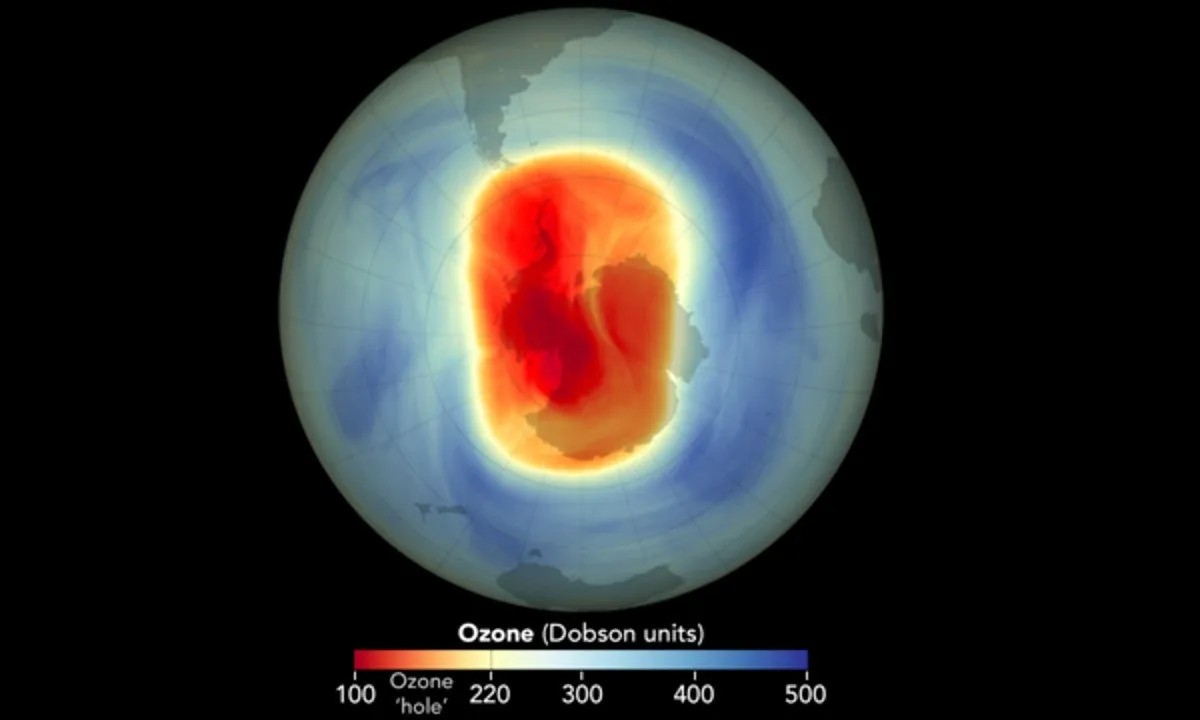Study links three HFOs to super-pollutant R23 via ozone reaction in atmosphere
January 12, 2024

A new study has determined that three HFOs, including the widely used HFO-1234ze(E), react with ozone when they are released into the atmosphere to produce R23 (trifluoromethane), a powerful greenhouse gas with a 100-year GWP of 14,800 (IPCC, 4th edition).
The study, “Ozonolysis can produce long-lived greenhouse gases from commercial refrigerants,” was published on December 11, 2023, in the Proceedings of the National Academy of Sciences (PNAS).
The study found in experiments that three HFOs – HFO-1234ze(E), HFO-1336mzz(Z) and HFO-1243zf – generated R23 by reacting with ozone (ozonolysis), with HFO-1234ze(E) producing more than eight times as much R23 as the other two. HFO-1234ze(E) is commonly employed as a refrigerant, foam-blowing agent and propellant.
Two other HFOs – HFO-1234yf and HCFO-1233xf – did not produce R23 in the experiments. However, HFO-1234yf is known to produce TFA (trifluoroacetic acid) in the atmosphere by reacting with OH (hydroxyl) radicals; TFA is then absorbed in rain and distributed in the environment, with potential adverse health and environmental effects.
The production of R23, even in small quantities, impacts the ultimate GWP of the implicated HFOs. For example, while HFO-1234ze(E) has a reported 100-year GWP under 1, its GWP adjusted for R23 production increases to 14, according to the study.
“To assess the potential of HFO ozonolysis as a source of long-lived f-gases in the atmosphere, a combination of experiment, theory, and global modeling simulations were performed, allowing us to determine product yields, rationalize the underlying chemical mechanisms and estimate the environmental consequences,” the study said.
The study noted that while the radiative (global warming) impacts of HFOs are typically not expected to last far beyond their atmospheric lifetimes of about 10 days, “when ozonolysis products are accounted for, HFO-1234ze(E) still has a significant GWP even at the 500-year time horizon.”
But the study acknowledged that the fractions of HFOs that are consumed by ozone in the global simulations, compared with that broken down by OH (the dominant atmospheric oxidant), are minor in each case, contributing 2.96%, 1.25% and 0.13% for HFO-1234ze(E), HFO-1243zf and HFO-1336mzz(Z), respectively.
The main reason the percentages are so small is that only 10% of Earth’s ozone is dispersed in the lower atmosphere, where an HFO leaking into the air would have the chance to react with it, according to an article on the study in the journal Science. (Other refrigerants – CFCs and HCFCs – are well known to have depleted the main ozone layer that protects Earth from the UV rays of the sun; those refrigerants were phased out globally via the Montreal Protocol.)
The Science article quoted Stephen Montzka, an atmospheric scientist at the U.S. National Oceanic and Atmospheric Administration who was not involved in the ozonolysis study, as saying its implications were “unclear” as the amount of R23 produced by the HFOs is “minute.”
But the Science article also quotes Mark McLinden, a chemical engineer at the National Institute of Standards and Technology who was also not involved in the study, as saying that “it is very important to examine the environmental fate of substances emitted into the atmosphere – by all mechanisms. So kudos to the authors.”
“I would hope that chemical companies might take note of this chemistry,” said one of the authors of the study, Max McGillen, an atmospheric chemist at CNRS, France’s national research agency, in the Science article. “It identifies the need to really assess the fate of these chemicals that are being produced in a more holistic way.”
HFO producers Chemours and Honeywell did not respond to a request for comment.
Another route to R23
A 2021 study by researchers at the University of New South Wales (UNSW) in Sydney, Australia, also linked production of R23 in the atmosphere to HFO-1234ze(E), but as a result of conventional oxidation by OH radicals and photolysis (action of light), not by reaction with ozone.
HFO-1234ze(E) is known to oxidize completely in the atmosphere to form trifluoroacetaldehyde (CF3CHO). The subsequent photolysis of this substance in the atmosphere is largely thought to produce molecular “radicals” (CF3 and CHO) that lead to benign compounds in the atmosphere (CO2 and HF). However, lab experiments at zero pressure led the Australian study’s researchers to conclude that there is “unequivocally a unimolecular pathway to [R23] from CF3CHO,” noted Christopher Hansen, Lecturer and ARC DECRA Fellow at the UNSW Sydney School of Chemistry and one of the authors of the study. This, he said, “raises a red flag,” though it’s not necessarily the same in the atmosphere.
Under this model, 11% ± 5.5% of emitted CF3CHO molecules become R23, leading to an effective 100-year GWP of about 1,400 ± 700 for HFO-1234ze, said Hansen.
Subsequently, in a 2022 Ph.D. thesis, Jyoti S. Campbell, a researcher at the UNSW Sydney School of Chemistry, Faculty of Science at who worked with Hansen, further explored the photolysis of CF3CHO.
Campbell determined an R23 “quantum yield” of 0.33% from the photolysis of CF3CHO, with a lower limit of 0.15%, which was “remarkably consistent” with another recent study. From that she calculated the “eGWP” of CF3CHO to be 175 with a lower bound of 80 and the eGWP of HFO-1234ze to be 150 with a lower limit of 70. “The EU [GWP] cutoff for halogenated chemicals is 150, so blends of HFO-1234ze with high GWP HFCs would be banned if this measurement of the quantum yield is validated in the future,” she said in her thesis.
“[R23] has an uncommonly high GWP, and it is therefore critical to accurately determine the atmospheric quantum yield of [R23] to determine the true effective GWPs of new potential refrigerants,” she added.


